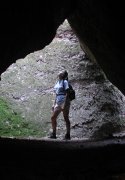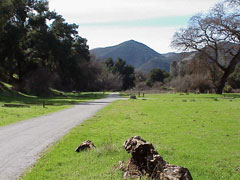In a world plauged by polarized views, here's another one to add to the list. Do you want electronic ring tones to spoil the quiet of your park visit, or do you find yourself on the opposite end of the spectrum--feeling unplugged if your iPad gives you blank looks for want of an Internet connection?
 |
| Cell phone tower disguised as a tree. Coming to your favorite National Park? |
As Americans become more and more "connected," the thought of being without e-mail or even phone service is disconcerting to some. Others, to quote Thoreau, "Went to the woods because I wished to live deliberately, to front only the essential facts of life, and see if I could not learn what it had to teach, and not, when I came to die, discover that I had not lived." For them, cell phones and laptops are anything but desirable for fronting those essential facts of life--in their hands, or anyone else's.
Yellowstone's current cellular policy allows for only limited cell tower construction in the park. No towers in wilderness areas, none along road corridors, and none in campgrounds. While concessionaires are given the nod to provide WiFi service in some places, none are allowed in the Old Faithful Inn and the park's Lake Hotel in order to, "preserve the historic lodging experience."
Historic experience aside, some clamor for extended digital service. They call for service in the name of safety. But opponents respond that bringing in more cellular service to the nation's parks could just provide a false sense of security. It wouldn't likely be possible to get coverage to all areas of all parks, and back country visitors might think no matter where they go, if they get in trouble they could always call for help--to no avail.
In Montana, both at Yellowstone and at Glacier, the matter of more cellular service is one being given consideration. A Reuters story provides more details on it. Meantime, what say you? We'd love to hear your comments.





